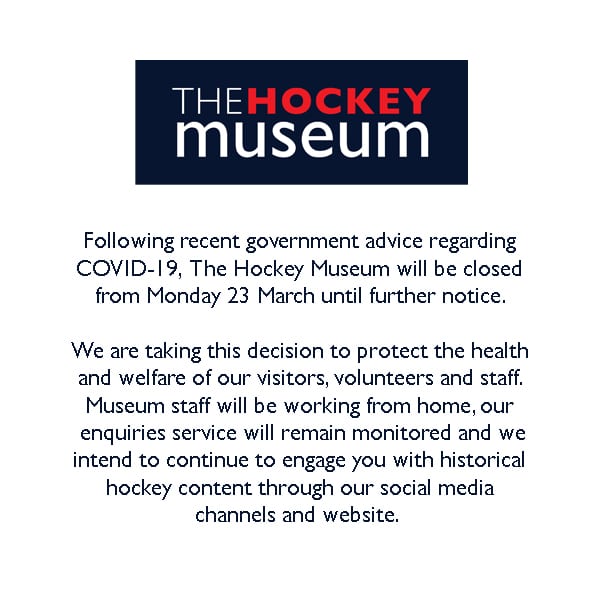You’ll likely be aware that THM has been running a campaign to collect material that documents the impact of COVID-19 on hockey. More information and a fantastic, free time capsule activity pack for children can be found here.
One particularly inspirational story that has reached us as a result of this contemporary collecting came from Moss Park HC in Manchester where half of their playing membership are keyworkers.
Lesley Ginsburgh, a Design & Technology teacher at Blessed Thomas Holford Catholic College, Altrincham, marshalled her students to make much-needed protective visors for her community. A car boot full went with her Moss Park teammate Eilidh, a junior doctor, to a local Intensive Treatment Unit (ITU); some went with Jos, a local GP, to her practice and some went to a local care agency managing very high-risk patients. Together, Lesley and her students made 1,700 visors and distributed them to anyone who wanted them, from funeral directors and hospices to mental health teams and school nurses. All would have been short of personal protective equipment (PPE) without her efforts.
You can hear Lesley’s remarkable story in her own words, now preserved within THM’s collection, by watching the video below.
 |
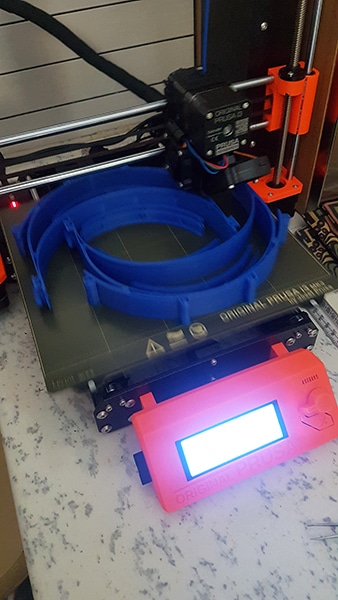 |
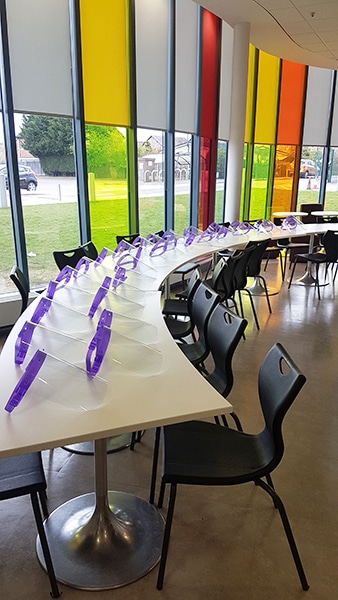 |
||
| Lesley in her “rough” first attempt as discussed in the video. |
Making part of the visors in the workshop at Blessed Thomas Holford Catholic College. |
Completed visors are laid out ready for |
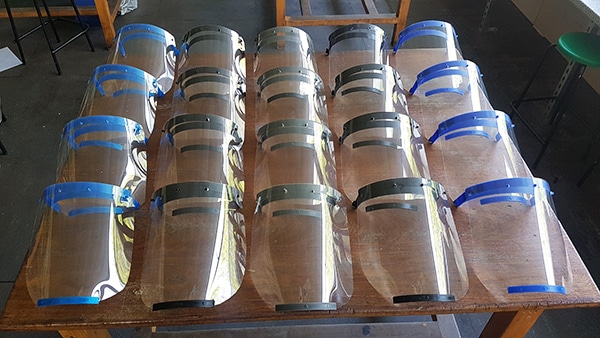 |
Hers is a story that draws a neat parallel with another recently surfaced story of philanthropy and community spirit, but from WW1 – another time of national crisis.
In November 1915 The Hockey Field magazine, then the mouthpiece of the All England Women’s Hockey Association (AEWHA), issued an appeal for hockey players to make fearnought gauntlets for the Royal Navy. 480 pairs of gauntlets (gloves) were urgently needed for the 3rd and 10th Destroyer Flotillas and over 10,000 pairs required for the whole Navy fleet.
Fearnought was a tough insulating wool or flannel-type fabric which prior to WW1 had been used to line the hulls of Arctic and Antarctic exploration vessels. It was obviously a phenomenal insulator. Thinner material such as shoddy or cotton was not sufficient. When it became cold on the ships, particularly bad at night and during the winter, thinner gloves would stick to metal surfaces, which included things like projectiles and the wheels for working the ships’ guns and sights. Not wearing gloves wasn’t an option because the sailors’ hands would rapidly go numb.
Through appeals like the one in The Hockey Field – which included purchase information and instructions for creating the gauntlets (see below) – the mass production of fearnought gauntlets was realised by a large number of individual acts. Just as people within hockey – individuals like Lesley of Moss Park HC – have come together in the face of the COVID-19 pandemic to offer selfless acts of charity, so too did individual members of the ‘hockey family’ during WW1.
As one naval officer wrote in the Manchester Evening News when appealing for fearnought gauntlets in 1914 (yes, Manchester again), “Don’t be afraid of clumsiness; that does not matter. I assure you nothing would be appreciated more.” Just as Lesley’s first efforts were in her own words “rough”, like the gauntlets their success lay in their practicality and in a personal determination to help others through a crisis.
If you have any material that could be relevant to THM’s #CollectingCOVID campaign or any questions around it, please get in touch.
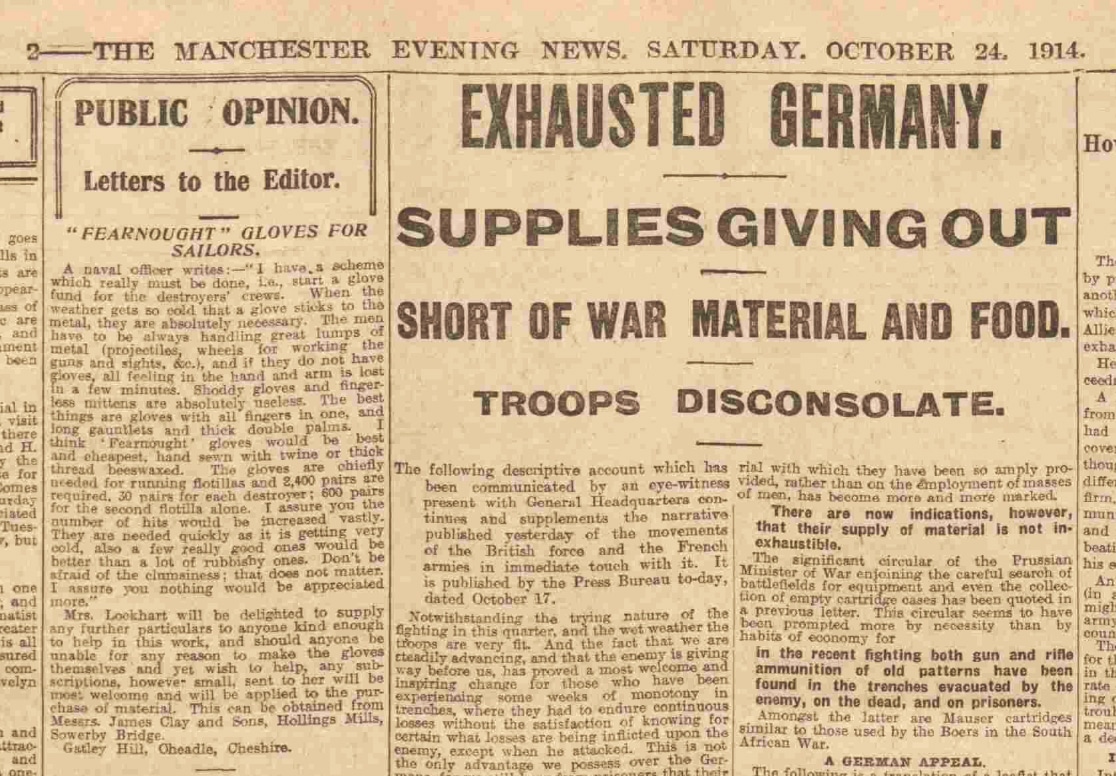 |
| “Fearnought Gloves for Sailors”, The Manchester Evening News, 24 October 1914. Click the article to view a more easily readable version (you may need to zoom in). |
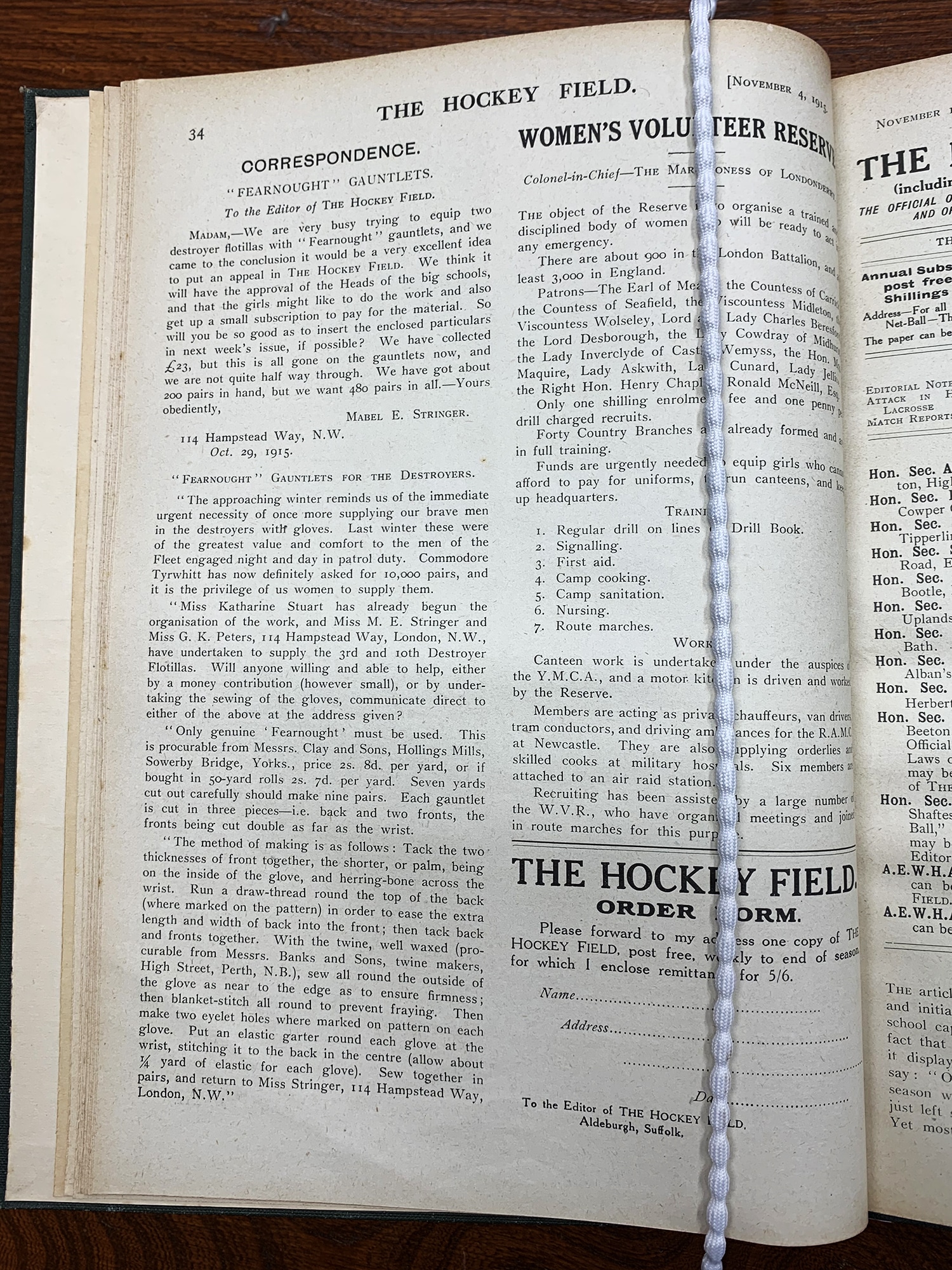 |
| “Fearnought Gauntlets”, The Hockey Field, 4 October 1915. Click the article to view a more easily readable version (you may need to zoom in). |




